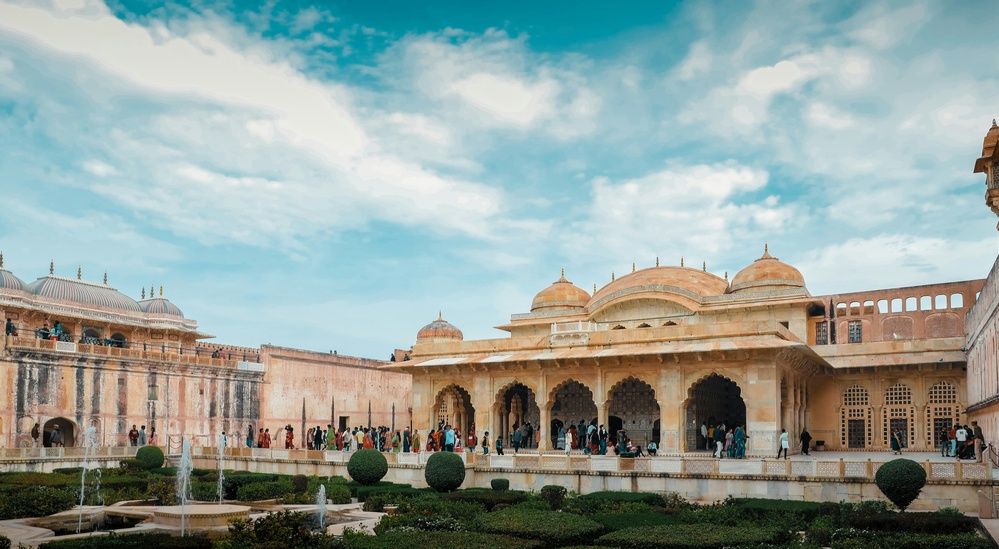Rajasthan, known as the “Land of Kings,” is a state where history lives and breathes in every corner. From majestic palaces and imposing forts to centuries-old temples and traditional havelis, heritage tourism in Rajasthan offers an immersive experience into India’s regal past. With its vibrant culture, awe-inspiring architecture, and fascinating tales of valor and romance, Rajasthan is a destination where time slows down and traditions thrive.
This complete guide walks you through everything you need to know about heritage tourism in Rajasthan, including its cultural richness, architectural marvels, and historical significance.
Why Heritage Tourism in Rajasthan?
Rajasthan has been home to several Rajput kingdoms, each leaving behind a rich legacy of architecture, art, and traditions. Heritage tourism here goes beyond sightseeing—it’s about experiencing royal hospitality, vibrant festivals, folk traditions, and the grandeur of a bygone era. Whether you’re walking through a centuries-old fort, staying in a heritage haveli, or witnessing a cultural performance, you’re engaging with a living history.
Must-Visit Heritage Cities of Rajasthan
1. Jaipur – The Pink City
As Rajasthan’s capital and a UNESCO World Heritage City, Jaipur is a treasure trove of royal palaces and forts:
- Amber Fort: A hilltop fort with intricate mirror work and elephant rides.
- City Palace: A royal residence with museums and art galleries.
- Jantar Mantar: A historical astronomical observatory.
Jaipur also offers traditional handicrafts, folk music, and heritage hotels that reflect the city’s regal charm.
2. Udaipur – The City of Lakes
Famed for its serene lakes and romantic ambiance, Udaipur is dotted with:
- City Palace: A sprawling palace overlooking Lake Pichola.
- Lake Palace: Now a luxury hotel, it seems to float on water.
- Bagore Ki Haveli: A historic mansion showcasing royal lifestyle and daily folk performances.
Udaipur offers a softer, elegant side of heritage tourism in Rajasthan, perfect for cultural immersion.
3. Jodhpur – The Blue City
Known for its indigo houses and colossal forts:
- Mehrangarh Fort: One of India’s largest forts, offering stunning city views and royal exhibits.
- Umaid Bhawan Palace: A blend of heritage and modern luxury, still home to the royal family.
- Clock Tower and Sardar Market: Bustling bazaars with antiques and handicrafts.
The city’s deep connection to warrior culture and architectural splendor make it a key destination.
4. Jaisalmer – The Golden City
Rising from the Thar Desert, Jaisalmer is famed for:
- Jaisalmer Fort: A living fort with homes, temples, and shops within its walls.
- Patwon Ki Haveli: A collection of ornate mansions with intricate carvings.
- Sam Sand Dunes: Where desert camps and camel safaris bring ancient trade routes to life.
The golden sandstone architecture and desert backdrop add a magical touch to Jaisalmer’s heritage.
Architectural Heritage of Rajasthan
One of the strongest pillars of heritage tourism in Rajasthan is its unique architectural style—a fusion of Rajput, Mughal, and Indo-Islamic influences.
Key Features Include:
- Forts: Massive structures like Chittorgarh and Kumbhalgarh with high walls, water reservoirs, and war rooms.
- Palaces: Luxurious spaces like the City Palaces of Jaipur and Udaipur, designed for royal comfort and grandeur.
- Havelis: Merchant homes with ornate facades and colorful frescoes, especially in Shekhawati.
- Temples: Intricately carved structures like Ranakpur Jain Temple and Eklingji Temple, showcasing religious artistry.
Each site tells a different story, reflecting the region’s dynasties, beliefs, and regional craftsmanship.
Cultural Elements That Enhance the Experience
1. Fairs and Festivals
Rajasthan is home to colorful festivals that reflect its heritage:
- Pushkar Camel Fair: A traditional livestock fair with folk music and competitions.
- Teej and Gangaur: Celebrating feminine power with processions and rituals.
- Desert Festival in Jaisalmer: A showcase of camel races, puppetry, and local music.
These events are not only entertaining but also connect visitors with the state’s cultural soul.
2. Folk Music and Dance
Ghoomar, Kalbeliya, and Bhavai dances, along with instruments like the sarangi and dholak, provide rhythmic storytelling. These performances, often held in heritage hotels or cultural evenings, make for unforgettable memories.
3. Cuisine
Heritage food is a big part of the experience. Enjoy royal Rajasthani dishes like:
- Dal Baati Churma
- Laal Maas
- Ghevar and Malpua
Many heritage hotels offer traditional cooking classes, giving tourists a taste of Rajasthan’s culinary heritage.
Staying in Heritage Properties
Rajasthan is renowned for converting royal palaces and havelis into luxurious heritage hotels. Places like:
- Taj Lake Palace, Udaipur
- Samode Palace, Jaipur
- Narain Niwas Palace, Jaipur
- Deogarh Mahal, near Udaipur
These properties offer authentic decor, traditional hospitality, and experiences like elephant rides, cultural evenings, and guided tours of the premises.
Sustainable Heritage Tourism in Rajasthan
Many initiatives are in place to promote responsible and sustainable tourism:
- Restoration of historic sites through public-private partnerships.
- Promotion of local arts, textiles, and crafts through government-supported platforms.
- Eco-conscious stays and ethical travel practices to preserve cultural integrity.
Travelers are encouraged to support local artisans, respect cultural norms, and contribute to community-based tourism efforts.
Conclusion
Heritage tourism in Rajasthan is more than just a visit to ancient monuments—it’s a journey into a world where kings ruled, art flourished, and traditions continue to thrive. With its stunning architecture, vibrant culture, royal hospitality, and deep historical roots, Rajasthan offers a rich and unforgettable experience for every kind of traveler. Whether you’re wandering through forts, attending folk festivals, or relaxing in a heritage haveli, you’re stepping into a living story that continues to enchant the world.


